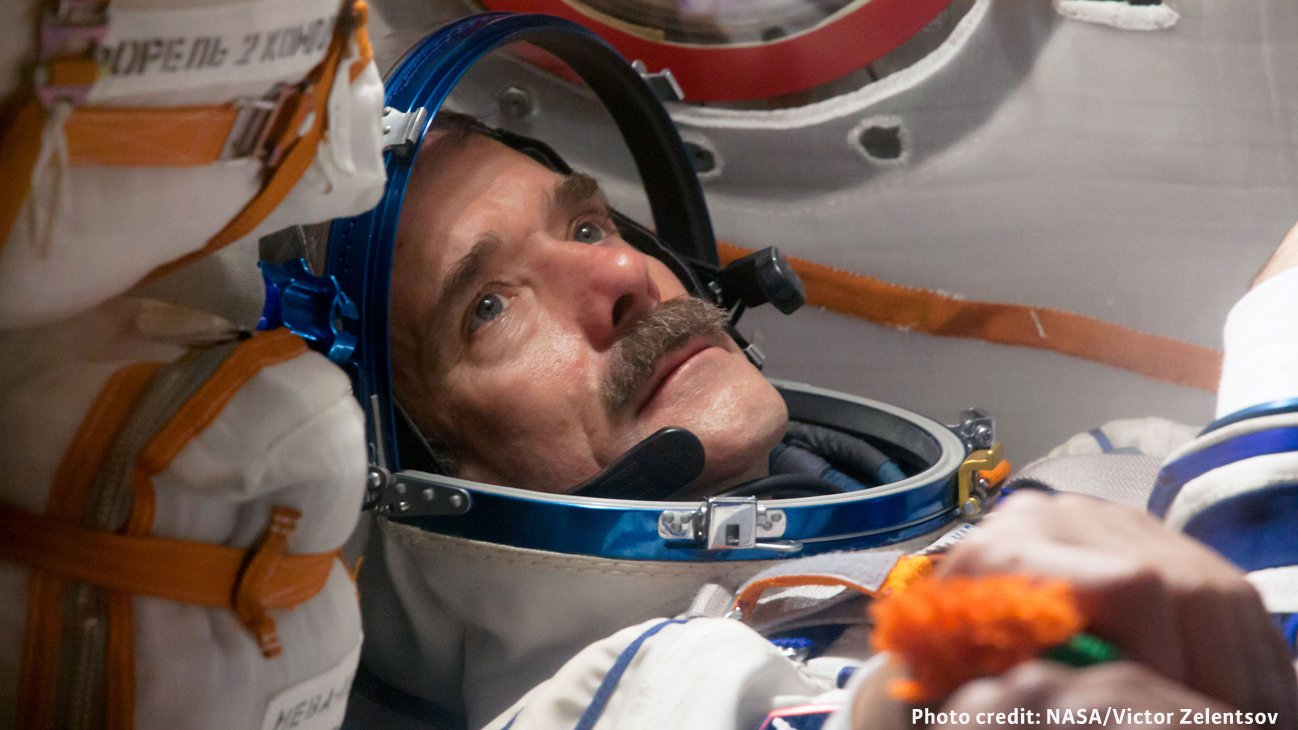“Good morning, Earth!” That is how Colonel Chris Hadfield—writing on Twitter—woke up the world every day while living for five months aboard the International Space Station. Through his 21-years as an astronaut, three spaceflights and 2600 orbits of Earth, Colonel Hadfield has become a worldwide sensation, harnessing the power of social media to make outer space accessible to millions and infusing a sense of wonder into our collective consciousness not felt since humanity first walked on the Moon. Called “the most famous astronaut since Neil Armstrong,” Colonel Hadfield continues to bring the marvels of science and space travel to everyone he encounters. Colonel Hadfield spoke with Wired about the next step in space exploration:
Chris Hadfield spent 166 days in space and spacewalked for almost 15 hours — but he’s eager for humans to venture further. The next “logical” space exploration? Humans is returning to the Moon and building colonies there.
“We will be on International Space Station for another ten years or so, and where’s the next obvious place we’ll go: the Moon. It’s only three days away,” the 59-year-old Canadian astronaut tells WIRED.
Space programs, from SpaceX and Nasa, are targeting putting humans on Mars within the next 20 years, with Nasa likely to pick its landing site during the next presidential term. But Hadfield, who has now retired, says the Moon is an ideal testing ground. “We need to be able to get everything wrong and not kill everybody,” he says.
“I expect we’ll treat the Moon, for the next 100 years, like we’ve treated Antartica for the last 100 years. With an initial outpost briefly and then longer stays and people staying through the entire winter, and eventually we will have permanent habitation on the Moon.” Then, he says, humans will go as far as Mars.
And a return to the Moon, more than 40 years since the last humans left, could happen very soon indeed. The European Space Agency has announced its intent to put humans back on the Moon “by the end of the next decade”.
The agency, which will be supported with its plans by Nasa and other agencies, said that human missions will start in the “early 2020s” with “astronauts interact[ing] with robots on the lunar surface”. Hadfield said he would make a fourth trip into space, in any capacity.
With Elon Musk’s SpaceX continue tests on its privately-built Dragon 2 capsule, which will be one of the first commercial spacecraft to transport astronauts to the ISS, Hadfield argues that commercial spaceflight is at a “tipping point”.
“The real question is can you get the price down low enough so that the customer can be someone beside a nation? Can you make the price low enough so that the customer can be a private company or an private individual,” he says.
“Extremely wealthy people can maybe buy a ride to space but we’re getting to the point, especially with the recent advances at SpaceX, [where] it becomes more and more available. And to me that is just natural.”
Hadfield has been busy since his return from the ISS in 2013: he’s released an album; a book; hosted live shows, and is now turning to education. He’s even been recreated digitally, using technology from The Foundry, for a cartoon web series, It’s Not Rocket Science, where he will tackle climate change, vaccinations and evolution.
But among the hype around his famed David Bowie Star Man cover and ISS selfies, it’s easy to forget the serious purpose of the spacecraft: furthering human knowledge.
It’s this, for Hadfield, that will make it possible for humans to permanently settle away from Earth.
“People only see what I was doing while I was transmitting but of course that was like ten minutes a day, so they think that’s all I am doing up there,” he says.
At any point almost 200 concurrent experiments are taking place aboard the space station. Ranging from the effects of spaceflight on the human body and renewable energy to 3D printing and climate monitoring, the ISS remains a vital scientific research tool.
The discovery of space’s mysteries is what Hadfield says is most important about the station. Hadfield lists the alpha magnetic spectrometer, which sits on top of the space station “collecting subatomic particles from the universe to try and understand dark matter and dark energy” as one of the most important ongoing experiments for him.
“If we can crack what dark matter and dark energy are that may be the most significant discovery that ever comes from the space station.”

